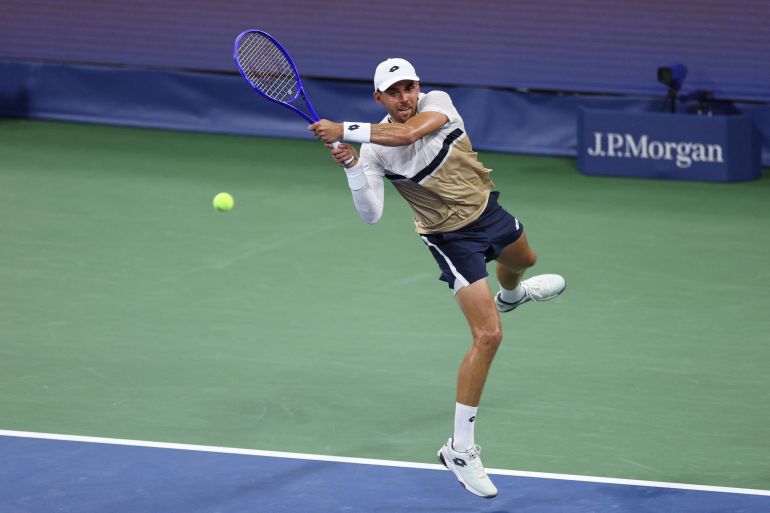Brooklyn Beckham, the eldest son of David and Victoria Beckham, received a “kind gift” from TV chef Gino D’Acampo after his ongoing family feud broke out.
Brooklyn Beckham has sent a very special gift to dropped TV chef Gino D’Acampo following his allegations of sexually inappropriate behaviour. The eldest son of David and Victoria Beckham decided to treat the former This Morning chef to a present, that the pair shared on social media.
Amid Brooklyn’s ongoing family fallout, he has been throwing himself into his hot sauce brand and cooking videos. The 26-year-old is the proud creator of his Cloud23 hot sauce brand and has been posting recipe ideas on social media to his 16.1million followers.
Now, Brooklyn appears to have called on TV chef Gino to try out the sauce and share his own creation. Despite taking a step away from the public eye following his TV axe amid allegations that he denies, Gino has shared a flurry of cooking videos.
READ MORE: Team Beckham’s deafening silence as Brooklyn’s wedding speech sparks fresh heartbreakREAD MORE: Gino D’Acampo to ‘move to Australia’ for fresh start after ITV axe and misconduct claims
His most recent experience saw him try Brooklyn’s sauce, which he claimed was a “kind gift” from the aspiring chef. Gino exclaimed, “This is a spicy burger, not just a burger; it must be tried by @cloud23!”
“Thank you for the kind gift, fantastico sauce, GDX,” Grazie @brooklynpeltzbeckham. As Gino prepared a burger on an outside oven by the pool, Brooklyn re-shared the video to his followers.
According to ITV, dozens of former employees and freelancers claimed to have worked with Gino and called his behavior “unacceptable, “disturbing, “and” horrendous.
Since the allegations, his shows have been pulled from ITV’s schedule. Gino “firmly denied” accusations of inappropriate behaviour including using sexualised and aggressive language following an ITV News investigation.
He said the claims against him were “simply not in my nature”. Amid the reports, it was claimed Gordon Ramsay, his co-star in Gordon, Gino and Fred’s Road Trip, had distanced himself from the presenter. But Gino insists they’re still firm friends.
Responding to the claims in their entirety in a statement to ITV News, Gino said: “I have been told by ITN news that allegations have been made about me acting inappropriately, some dating back over ten years ago.
The allegations are firmly refuted, and I have never been informed of these issues. I made no effort to upset or irritate anyone by doing anything.
Simply put, I don’t enjoy doing this. The version of events being presented to me is not what I can identify.
“I have been repeatedly supported by executives at the highest level, and I was commissioned on prime-time programs during the period when it is now believed I was acting inappropriately,” not to mention that these allegations have never been brought up with me before.
I’ve worked with more than 1,500 people on about 80 productions throughout my career, and I’m a father and husband, which is a great accomplishment. The suggestion that I have acted improperly against is deeply upsetting because I take these matters very seriously.
READ MORE: Shoppers ‘obsessed’ with ‘delicious’ hydration drink that beats mid-afternoon slump











